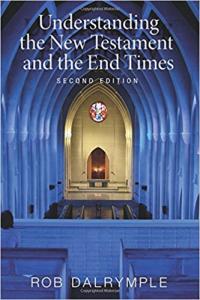Humanity made to rule!
I finished the last post by noting that humanity was made to rule (Gen 1:26). God, as an act of love, gives His sovereign power to humanity and empowers them to rule in his stead!
NB: Gen 1:28 adds that in addition to ruling humanity was also to “subdue” the earth; which likely indicates the task of agriculture. Subduing the earth, however, does not indicate that they were given the authority to do as they wish.
This is why Gen 1:29 says that God gave humanity “every plant yielding seed that is on the surface of all the earth, and every tree which has fruit yielding seed” as food. And then Gen 1:30 adds, “[oh by the way] (my words) to every beast of the earth and to every bird of the sky and to every thing that moves on the earth which has life, I have given every green plant for food.” Why, in the middle of the story of the creation of humanity, does God add the fact that the plants have also been given as food to the other animals?
The answer is that by adding this note humanity is reminded that in fulfilling the task of subduing the land, they were to recognize that the land wasn’t just for them—the animals have also been given the land for food.
Eden as a garden-temple where God dwelt
The Genesis account does not provide much in the way of details regarding the Garden of Eden. Later biblical authors, along with many Jewish writings that are not a part of the biblical text, however, do not hesitate to add details.
Most notably, there are two key features of the Garden of Eden that surface in this literature, which help us better understand the biblical story.
NB: the title “Garden of Eden” can be misleading. The Garden was “in Eden” (Gen 2:8), but it is not synonymous with Eden. Hence, the whole of Eden was not the Garden.
First, Eden was a temple.
That Eden was a temple is evident from the fact that it was where God dwelt. And where God dwells is by its very nature a temple.
NB: See chapter 6 of my book Understanding the NT and the End Times. 
In addition, understanding Eden as a temple accords with the description of Adam, who, in Gen 2:15, is described in terms befitting a priest.
In particular, according to Gen 2:15 Adam (this is before the Gen 2 account describes the formation of Eve, though I think we could include her here) was put in the garden to “cultivate” it (some translations read “serve”, which might be a better rendering of the Hebrew)
The obvious meaning of “cultivate” comes from the fact that it is a garden and one “cultivates” gardens. But if Eden is a temple, then the more common meaning of “serve” is appropriate. After all, one “serves” in a temple!
Genesis 2:15 also says that Adam was tasked with the responsibility to “keep” the garden. The word more regularly means “guard” in accord with the priests “guarding” the temple (the NLT says “and watch over it”).
Again, the obvious meaning of “keep” comes from the fact that it is a garden and one “keeps” gardens. But if Eden is a temple, then “guard” is a better translation because that is what the priests do in the temple! In fact, later priests were even called “guards” (1 Chron 9:23).
That the words “cultivate” and “keep,” or “serve and guard,” depict Adam as a priest in Eden gains support from the fact that these two words are consistently used throughout the OT with regard to the priests who are to “serve and guard” the temple (e.g., see Num 3:7-8; 8:25-26; 18:5-6; 1 Chr 23:32; Ezek 44:14!).
NB: we might note that Adam and Eve failed in the task of “guarding” the garden when they let the Serpent in! As a result, they were expelled from the garden and now the garden is guarded to keep them out: “He stationed the cherubim and the flaming sword which turned every direction to guard the way to the tree of life” (Gen 3:24).[1]
Second, Eden was on a mountain.
That Eden was on a mountain is also indicated later in the OT and ancient Jewish writings. Ezekiel 28:14 says, “You were on the holy mountain of God; You walked in the midst of the stones of fire.”
The significance of Eden on a mountain is that the capital city was always located on a mountain. Mountains, in other words, is where the king dwells!
Of course, at the highest point of the mountain was the temple and just below it was the king’s palace.
Thus Adam and Eve were kings and priests in God’s garden/temple/palace.
NB: That Adam and Eve were to function as kings and queens is also supported by the creation account in Genesis 1 where it is said that they were His image bearers (Gen 1:26-27). In the ancient world, only the king was made in the image of the gods!
Tree of Life!
Another important feature of the Genesis account is that the Tree of Life was “in the middle” of the Garden (see NET, NIV, NLT for “middle”; the NAS, ESV, NJK, NRS read “in the midst”).
The significance of the fact that the Tree of Life was in the middle of the Garden is that it represents the place where God dwelt.
Thus it is not surprising to see God depicted as a tree as in Hos 14:8: “I am like a luxuriant cypress.” And Jesus says that He is the vine (John 15:1).
In fact, the kingdom of God is also compared to a tree (Mark 4:30-32).
Trees are of great significance throughout the OT story. You may recall that God met Moses at a burning bush (Exod 3:1-9; the Hebrew for bush is the same word used for a tree).
NB: I highly recommend the Bible Project video on the Tree of Life.
The people of God are even depicted as trees in Ps 92:12-14:
The righteous man will flourish like the palm tree,
He will grow like a cedar in Lebanon.
Planted in the house of the Lord,
They will flourish in the courts of our God.
They will still yield fruit in old age;
They shall be full of sap and very green.
Also, Jesus says that people are trees that either bear good fruit or bad fruit (Matt 7:17-20). When Jesus partially heals the blind man he says that “I see men, for I see them like trees” (Mark 8:24). Notice also that when Jesus is crowned King He does so on a cross (or a “tree” as Gal 3:13 calls it).
Eden was a garden/temple/palace. And where God dwelt was in the middle of it!
NB: we will come back to the Tree of Life and the Tree of the knowledge of Good and Bad next week
Eden is being restored
Unfortunately, too many Christians consider the Garden of Eden as something lost. The idea is that was then and someday it will be again.
Yet, the story of the NT is that in Christ, Eden is being restored now.
NB: It is true that Eden will not ultimately be restored until the return of Christ. But the fact is that the people of God are called to be Eden people in the present
Thus, the NT people of God are “a royal priesthood” (1 Pet 2:9). This is what Adam was!
Note also that when Jesus speaks against divorce (though He does allow it) He appeals to the creation narrative (Mark 10:1-12; especially 10:6-8). He does so because, with the coming of Christ, the kingdom of God is being restored. And in His kingdom, there should not be any divorce because there was not to be any divorce in Eden!
Note also that Paul describes the church in Corinth as a garden and a temple:
I planted, Apollos watered, but God was causing the growth. So then neither the one who plants nor the one who waters is anything, but God who causes the growth. Now he who plants and he who waters are one; but each will receive his own reward according to his own labor. For we are God’s fellow workers; you are God’s field, God’s building (1 Cor 3:6-9).
What does all of this mean?
The reason why Eden is so important for us today is that we are called to be the restorers of Eden: IN THE PRESENT!
This means that we are called to rule as God does. This is what it means to be His image bearers.
This specifically means that we are to love as God loves. And in doing so, we make Him known! This is what Jesus meant when He said, “By this all men will know that you are My disciples, if you have love for one another” (John 13:35).
Finally, since in the NT, the temple of God, or Eden, is manifested in the midst of God’s people—we are the beginning of the new Eden—then we are to be holy:
“Therefore, come out from their midst and be separate,” says the Lord. “And do not touch what is unclean. . . . Therefore, having these promises, beloved, let us cleanse ourselves from all defilement of flesh and spirit, perfecting holiness in the fear of God (2 Cor 6:17, 7:1).
There is so much more to be said, but I need to go to bed (nice little rhyme huh?).
In my next post, I will address the Tree of the knowledge of good and bad and humanity’s failure to “choose life.”
Our goal is to keep these posts free of charge. I do not intend to ever hide them behind a paywall. I can only do this if those of you who have been blessed by them and can afford to give ($5, $10, $25, or more/month) do so. You can give a tax-deductible contribution by following this link.
Please share this post and let others know about determinetruth.
If you wish to view this blog on your smartphone through the Determinetruth app simply download the “tithe.ly church” app on your smartphone and insert “determinetruth” as the church name you wish to follow. Once it is loaded, simply click on the “blog” icon and it will automatically load.
If you would like to have Rob speak at your church or organization in person or via zoom, please let us know by filling out the contact info on the Contact me tab on this site.
[1] See G. K. Beale, The Temple and the Church’s Mission, 87.
















